So while I've been out of the weather loop lately, it looks like that model guidance roughly a week ago turned out to be right, and parts of the East Coast can expect some tropical storm impacts.
000
WTNT31 KNHC 221751
TCPAT1
BULLETIN
Tropical Storm Ophelia Intermediate Advisory Number 5A
NWS National Hurricane Center Miami FL AL162023
200 PM EDT Fri Sep 22 2023
...CYCLONE BECOMES TROPICAL STORM OPHELIA...
...TROPICAL STORM CONDITIONS CONTINUING ACROSS COASTAL PORTIONS OF
NORTH CAROLINA...
SUMMARY OF 200 PM EDT...1800 UTC...INFORMATION
----------------------------------------------
LOCATION...32.7N 76.0W
ABOUT 150 MI...240 KM SE OF CAPE FEAR NORTH CAROLINA
ABOUT 185 MI...295 KM S OF CAPE HATTERAS NORTH CAROLINA
MAXIMUM SUSTAINED WINDS...60 MPH...95 KM/H
PRESENT MOVEMENT...NNW OR 345 DEGREES AT 12 MPH...19 KM/H
MINIMUM CENTRAL PRESSURE...992 MB...29.29 INCHES
WATCHES AND WARNINGS
--------------------
CHANGES WITH THIS ADVISORY:
None.
SUMMARY OF WATCHES AND WARNINGS IN EFFECT:
A Storm Surge Warning is in effect for...
* Beaufort Inlet, North Carolina to Chincoteague, Virginia
* Chesapeake Bay south of Colonial Beach, Virginia
* Neuse and Pamlico Rivers
* Portions of Pamlico and Albemarle Sounds
A Tropical Storm Warning is in effect for...
* Cape Fear, North Carolina to Fenwick Island, Delaware
* Albemarle and Pamlico Sounds
* Tidal Potomac south of Cobb Island
* Chesapeake Bay south of North Beach
A Storm Surge Watch is in effect for...
* Surf City, North Carolina to Beaufort Inlet, North Carolina
* Remainder of Pamlico and Albemarle Sounds
A Storm Surge Warning means there is a danger of life-threatening
inundation, from rising water moving inland from the coastline,
during the next 36 hours in the indicated locations. For a depiction
of areas at risk, please see the National Weather Service Storm
Surge Watch/Warning Graphic, available at hurricanes.gov. This is a
life-threatening situation. Persons located within these areas
should take all necessary actions to protect life and property from
rising water and the potential for other dangerous conditions.
Promptly follow evacuation and other instructions from local
officials.
A Tropical Storm Warning means that tropical storm conditions are
expected somewhere within the warning area.
A Storm Surge Watch means there is a possibility of life-
threatening inundation, from rising water moving inland from the
coastline, in the indicated locations during the next 48 hours.
For a depiction of areas at risk, please see the National Weather
Service Storm Surge Watch/Warning Graphic, available at
hurricanes.gov.
For storm information specific to your area, including possible
inland watches and warnings, please monitor products issued by your
local National Weather Service forecast office.
DISCUSSION AND OUTLOOK
----------------------
At 200 PM EDT (1800 UTC), the center of Tropical Storm Ophelia was
located near latitude 32.7 North, longitude 76.0 West. Ophelia is
moving toward the north-northwest near 12 mph (19 km/h). This
general motion is expected to continue during the next day or so,
followed by a slight turn toward the north. On the forecast track,
the center of Ophelia will approach the coast of North Carolina
tonight, and then move across eastern North Carolina, southeastern
Virginia, and the Delmarva Peninsula Saturday and Sunday.
Data from the Air Force Reserve Hurricane Hunters and satellite wind
data indicate that maximum sustained winds have increased to near 60
mph (95 km/h) with higher gusts. Some slight strengthening is
possible before landfall along the coast of North Carolina.
Tropical-storm-force winds extend outward up to 275 miles (445 km)
from the center. NOAA buoy 41025 at Diamond Shoals, North Carolina,
recently reported a sustained wind of 47 mph (76 km/h) and a gust of
60 mph (97 km/h). A NOAA C-MAN station at Cape Lookout, North
Carolina, recently reported a sustained wind of 45 mph (72 km/h) and
a gust of 52 mph (83 km/h).
The estimated minimum central pressure is 992 mb (29.29 inches).
HAZARDS AFFECTING LAND
----------------------
Key messages for Ophelia can be found in the Tropical Cyclone
Discussion under AWIPS header MIATCDAT1, WMO header WTNT41 KNHC,
and on the web at hurricanes.gov/text/MIATCDAT1.shtml
STORM SURGE: The combination of a dangerous storm surge and the
tide will cause normally dry areas near the coast to be flooded by
rising waters moving inland from the shoreline. The water could
reach the following heights above ground somewhere in the indicated
areas if the peak surge occurs at the time of high tide...
Neuse and Bay Rivers...3-5 ft
Pamlico and Pungo Rivers...3-5 ft
Chesapeake Bay south of Colonial Beach...2-4 ft
Surf City, NC to Chincoteague, VA...2-4 ft
Albemarle Sound...2-4 ft
South Santee River, SC to Surf City, NC...1-3 ft
Chincoteague, VA to Manasquan Inlet, NJ...1-3 ft
Upper Chesapeake Bay...1-3 ft
Delaware Bay...1-3 ft
The deepest water will occur along the immediate coast in areas of
onshore winds, where the surge will be accompanied by dangerous
waves. Surge-related flooding depends on the relative timing of the
surge and the tidal cycle, and can vary greatly over short
distances. For information specific to your area, please see
products issued by your local National Weather Service forecast
office.
WIND: Tropical storm conditions are affecting portions of the North
Carolina coast within the warning area and will continue spreading
northward through Saturday.
RAINFALL: Ophelia is forecast to produce 3 to 5 inches of rainfall,
with localized amounts of 7 inches across portions of eastern North
Carolina and southeast Virginia from today into Saturday. Across
remaining portions of the Mid-Atlantic into southern New England, 2
to 4 inches of rainfall are forecast from later today into Sunday.
This rainfall may produce flash, urban, and small stream flooding
impacts.
SURF: Swells generated by Ophelia will affect much of the east
coast of the United States through this weekend. These swells are
likely to cause life-threatening surf and rip current conditions.
Please consult products from your local weather office.
TORNADOES: A few tornadoes are possible beginning tonight through
Saturday for portions of the mid-Atlantic Coast.
NEXT ADVISORY
-------------
Next complete advisory at 500 PM EDT.
$$
Forecaster Reinhart
000
WTCA41 TJSJ 221810
TCPSP1
BOLETÍN
Tormenta Tropical Ophelia Advertencia Intermedia Número 5A
Centro Nacional de Huracanes del SNM Miami FL AL162023
Traducción por el SNM San Juan PR
200 PM EDT viernes 22 de septiembre de 2023
...CICLÓN SE CONVIERTE EN TORMENTA TROPICAL OPHELIA...
...CONDICIONES DE TORMENTA TROPICAL CONTINUANDO A TRAVÉS DE SECTORES
COSTEROS DE CAROLINA DEL NORTE...
RESUMEN DE LAS 200 PM EDT...1800 UTC...INFORMACIÓN
----------------------------------------------
LOCALIZACIÓN...32.7N 76.0O
ALREDEDOR DE 150 MI...240 KM SE DE CAPE FEAR CAROLINA DEL NORTE
ALREDEDOR DE 185 MI...295 KM S DE CAPE HATTERAS CAROLINA DEL NORTE
VIENTOS MÁXIMOS SOSTENIDOS...60 MPH...95 KM/H
MOVIMIENTO ACTUAL...NO O 345 GRADOS A 12 MPH...19 KM/H
PRESIÓN CENTRAL MÍNIMA...992 MB...29.29 PULGADAS
VIGILANCIAS Y AVISOS
--------------------
CAMBIOS CON ESTA ADVERTENCIA:
Ninguno.
RESUMEN DE VIGILANCIAS Y AVISOS EN EFECTO:
Un Aviso de Marejada Ciclónica está en efecto para...
* Beaufort Inlet, Carolina del Norte hasta Chincoteague, Virginia
* Chesapeake Bay al sur de Colonial Beach, Virginia
* Río Neuse y Río Pamlico
* Porciones de Pamlico y Albemarle Sounds
Un Aviso de Tormenta Tropical está en efecto para...
* Cape Fear, Carolina del Norte hasta Fenwick Island, Delaware
* Albemarle y Pamlico Sounds
* Marea Potomac al sur de Cobb Island
* Chesapeake Bay al sur de North Beach
Una Vigilancia de Marejada Ciclónica está en efecto para...
* Surf City, Carolina del Norte hasta Beaufort Inlet, Carolina del
Norte
* Resto de Pamlico y Albemarle Sounds
Un Aviso de Marejada Ciclónica significa que hay un peligro de
inundación que amenace la vida, por el aumento del agua que se mueve
tierra adentro desde la costa, durante las próximas 36 horas en los
lugares indicados. Para una representación de las áreas bajo
riesgo, favor de consultar el Gráfico de Vigilancia/Aviso de
Marejada Ciclónica del Servicio Nacional de Meteorología, disponible
en hurricanes.gov.Esta es una situación que amenaza la vida. Las
personas localizadas dentro de estas áreas deben tomar todas las
acciones necesarias para proteger la vida y la propiedad del aumento
del agua y el potencial de otras condiciones peligrosas. Siga con
prontitud las instrucciones de desalojo y otras de los oficiales
locales.
Un aviso de tormenta tropical significa que se esperan condiciones
de tormenta tropical en algún punto dentro del área bajo aviso.
Una Vigilancia de Marejada Ciclónica significa que hay una
posibilidad de inundación que amenace la vida, por el aumento del
agua que se mueve tierra adentro desde la costa, en los lugares
indicados durante las próximas 48 horas. Para una representación de
las áreas bajo riesgo, favor de consultar el Gráfico de
Vigilancia/Aviso de Marejada Ciclónica del Servicio Nacional de
Meteorología, disponible en hurricanes.gov.
Para información específica para su área, favor monitorear los
productos emitidos por su oficina de servicio nacional de
meteorología.
DISCUSIÓN Y PERSPECTIVAS
----------------------
A las 200 PM EDT (1800 UTC), el centro de la Tormenta Tropical
Ophelia estaba localizado cerca de la latitud 32.7 norte, longitud
76.0 oeste. Ophelia se está moviendo hacia el norte-noroeste a
cerca de 12 mph (19 km/h). Se espera que este movimiento general
continúe durante el próximo día más o menos, seguido de un giro
ligero hacia el norte. En la trayectoria pronosticada, el centro de
Ophelia se acercará a la costa de Carolina del Norte esta noche, y
luego se moverá a través del este de Carolina del Norte, el sureste
de Virginia y la Península de Delmarva el sábado y el domingo.
Los datos de los Cazahuracanes de la Reserva de la Fuerza Aérea y
los datos de viento por satélite indican que los vientos máximos
sostenidos han aumentado a cerca de 60 mph (95 km/h) con ráfagas
más fuertes. Es posible algún fortalecimiento ligero antes de tocar
tierra a lo largo de la costa de Carolina del Norte.
Los vientos de intensidad de tormenta tropical se extienden hacia
275 millas (445 km) mayormente del centro. La boya 41025 de NOAA en
Diamond Shoals, Carolina del Norte, informó recientemente un viento
sostenido de 47 mph (76 km/h) y una ráfaga de 60 mph (97 km/h). Una
estación de NOAA C-MAN en Cape Lookout, Carolina del Norte, informó
recientemente un viento sostenido de 45 mph (72 km/h) y una ráfaga
de 52 mph (83 km/h).
La presión central mínima estimada es de 992milibares...29.29
pulgadas.
PELIGROS AFECTANDO TIERRA
----------------------
Los mensajes clave para Ophelia se pueden encontrar en la Discusión
de Ciclón Tropical bajo el encabezado MIATCDAT1 de AWIPS, encabezado
WTNT41 KNHC, y en la web en hurricanes.gov/text/MIATCDAT1.shtml
MAREJADA CICLÓNICA: La combinación de una marejada ciclónica
peligrosa y la marea causará que las áreas normalmente secas cerca
de la costa se inunden por el aumento de las aguas que se mueven
tierra adentro desde la costa. El nivel del agua pudiera alcanzar
la siguiente altura por encima del nivel de la superficie en algún
lugar dentro de las áreas indicadas si el máximo de la marejada
ocurre al mismo tiempo que la marea alta...
Neuse y Bay Rivers...3-5 pies
Pamlico y Pungo Rivers...3-5 pies
Chesapeake Bay al sur de Colonial Beach...2-4 pies
Surf City, NC hasta Chincoteague, VA...2-4 pies
Albemarle Sound...2-4 pies
South Santee River, SC hasta Surf City, NC...1-3 pies
Chincoteague, VA hasta Manasquan Inlet, NJ...1-3 pies
Upper Chesapeake Bay...1-3 pies
Delaware Bay...1-3 pies
Las aguas más profundas ocurrían a lo largo de la costa inmediata en
áreas donde los vientos soplan hacia tierra, donde la marejada será
acompañada por olas grandes y destructivas. Las inundaciones
relacionadas con las marejadas dependen del momento relativo de la
marejada y el ciclo de la marea, y pueden variar mucho en
distancias cortas. Para información específica en su área, favor de
referirse a los productos emitidos por su oficina local de
pronóstico del Servicio Nacional de Meteorología.
VIENTO: Las condiciones de tormenta tropical están afectando
sectores de la costa de Carolina del Norte dentro del área bajo
aviso y continuarán extendiéndose hacia el norte hasta el sábado.
LLUVIA: Se pronostica que Ophelia produzca de 3 a 5 pulgadas de
lluvia, con cantidades localizadas de 7 pulgadas a través de
sectores del este de Carolina del Norte y el sureste de Virginia
desde hoy hasta el sábado. A través de los sectores restantes del
Atlántico Medio hasta el sur de Nueva Inglaterra, se pronostica de 2
a 4 pulgadas de lluvia desde más tarde hoy hasta el domingo. Esta
lluvia puede producir impactos de inundaciones repentinas, urbanas
y de riachuelos pequeños.
OLEAJE: Las marejadas generadas por Ophelia afectarán gran parte de
la costa este de los Estados Unidos hasta este fin de semana. Es
probable que estas marejadas causen condiciones de oleaje y
corrientes marinas que amenacen la vida. Favor de consultar los
productos de su oficina local de meteorología.
TORNADOS: Algunos tornados son posibles comenzando esta noche hasta
el sábado para sectores de la Costa del Atlántico medio.
PRÓXIMA ADVERTENCIA
-------------
Próxima advertencia completa a las 500 PM EDT.
$$
Pronosticador Reinhart
000
WTNT41 KNHC 221453
TCDAT1
Potential Tropical Cyclone Sixteen Discussion Number 5
NWS National Hurricane Center Miami FL AL162023
1100 AM EDT Fri Sep 22 2023
Surface observations indicate the low pressure system off the
southeast U.S. coast is deepening this morning. Recent pressure and
wind data from NOAA buoy 41002 suggest the pressure has fallen to
around 996 mb. While surface analyses indicate there is still a
front in close proximity to the low, deep convection has become more
concentrated to the north of the center. In fact, GOES-16 1-min
visible imagery suggests the low-level center is re-forming closer
to the convection. The broad wind field is asymmetric, with the
strongest observed winds occurring to the north and west of the
frontal feature. A NOAA Saildrone sampling the system reported a
sustained wind of 40 kt and a gust around 50 kt earlier this
morning. Based on the available observations, the initial intensity
is held at 45 kt. An Air Force Reserve Hurricane Hunter aircraft is
scheduled to investigate the system this afternoon.
The initial motion of the cyclone is just west of due north (350/10
kt). The system is forecast to move north-northwestward to northward
through Saturday along the west side of a subtropical ridge over the
western and central Atlantic. This motion will take the center of
the cyclone inland over eastern North Carolina on Saturday morning
and over the Mid-Atlantic region Saturday night and Sunday. The
track guidance is in good agreement for this forecast. Based on the
slight northward adjustment to the initial position, the updated NHC
forecast is slightly faster than the previous one, showing the
cyclone center just inland in 24 h.
Based on recent satellite and observational trends, the cyclone
appears likely to strengthen during the next 12 h over the warm Gulf
Stream waters. The more organized convective structure should also
facilitate its transition to a tropical storm during the next 6-12 h
as it starts to become separated from its frontal features and
develops a smaller inner core. The near-term intensity forecast has
been bumped up slightly (55 kt) before the system moves inland early
Saturday. After landfall, the system is expected to weaken due to
the negative influences of land interaction, drier air, and strong
upper-level winds. This forecast shows extratropical transition by
48 h with dissipation by 72 h, in good agreement with the GFS and
ECMWF models.
Key Messages:
1. Tropical storm conditions are expected along portions of the
southeastern and mid-Atlantic U.S. coasts within the Tropical Storm
Warning area today into Saturday night.
2. There is a danger of life-threatening storm surge inundation
over portions of eastern North Carolina and southeastern Virginia,
including Pamlico and Albemarle Sounds, the Neuse and Pamlico
Rivers, the lower James River, and the lower Chesapeake Bay, where
Storm Surge Warnings are in place. Residents in these areas should
follow advice given by local officials.
3. Heavy rainfall from this system could produce flash, urban, and
small stream flooding impacts across portions of the Mid-Atlantic
states from North Carolina to New Jersey through Sunday.
4. Swells generated by this system will affect much of the U.S.
east coast through the weekend, likely causing life-threatening
surf and rip currents.
FORECAST POSITIONS AND MAX WINDS
INIT 22/1500Z 32.3N 75.6W 45 KT 50 MPH...POTENTIAL TROP CYCLONE
12H 23/0000Z 33.2N 76.3W 55 KT 65 MPH...TROPICAL CYCLONE
24H 23/1200Z 34.9N 76.8W 50 KT 60 MPH...INLAND
36H 24/0000Z 36.8N 77.0W 40 KT 45 MPH...INLAND
48H 24/1200Z 38.3N 77.0W 30 KT 35 MPH...POST-TROP/EXTRATROP
60H 25/0000Z 39.3N 76.5W 25 KT 30 MPH...POST-TROP/EXTRATROP
72H 25/1200Z...DISSIPATED
$$
Forecaster Reinhart
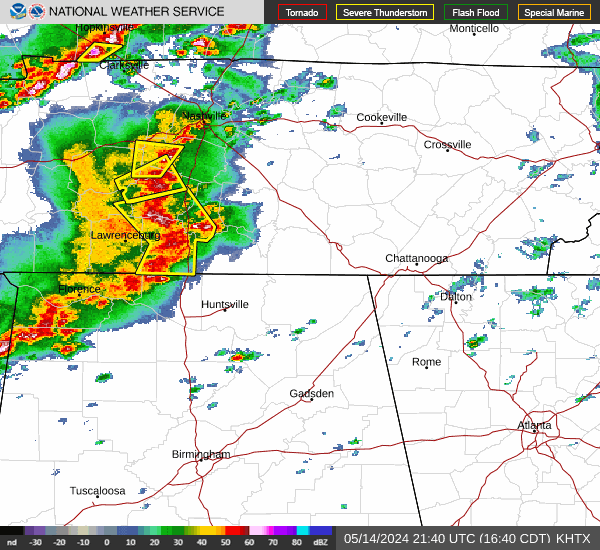
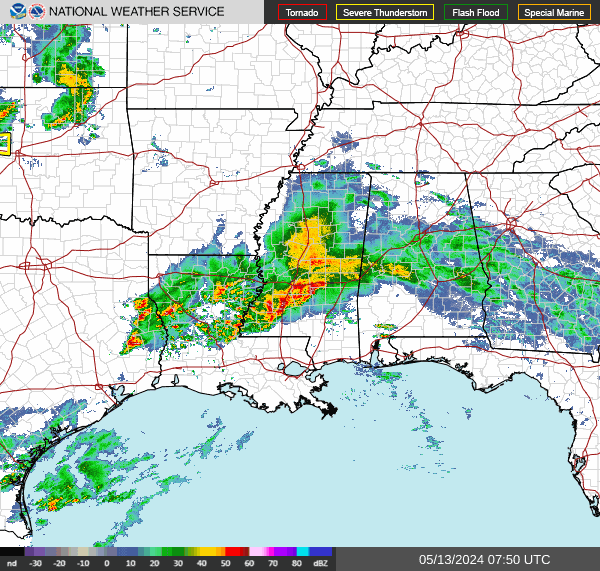


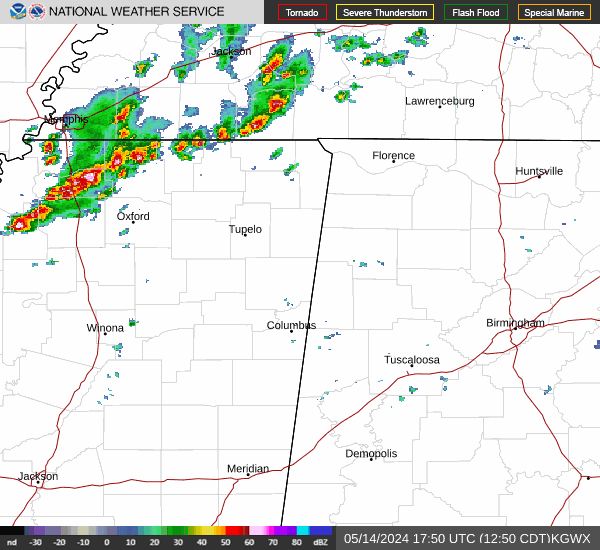
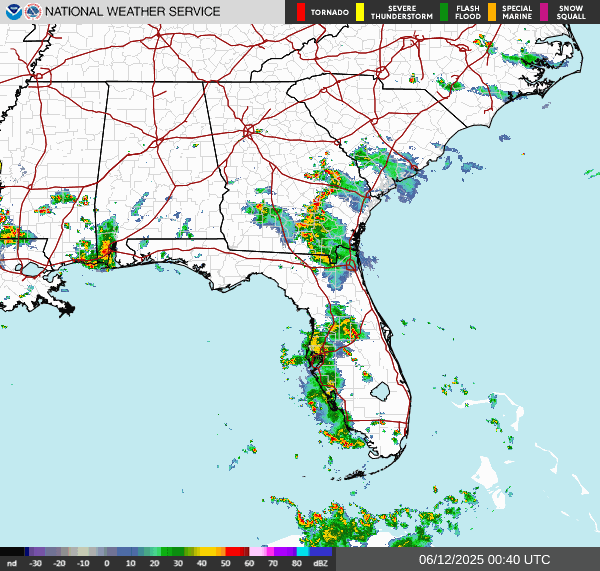
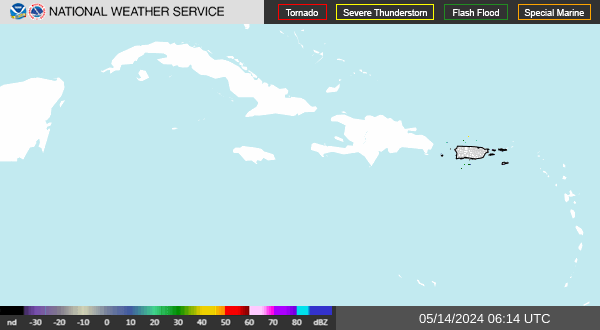




No comments:
Post a Comment